If you’re planning a drive from Victoria to Port Renfrew, home of some of the biggest and tallest trees on Vancouver Island, you’ll likely be wondering if there’s anything worthwhile to do on the way. The short answer? Absolutely! Driving the scenic coastal road to Port Renfrew is a fantastic way to see some of the beautiful rugged and wild landscapes of Southern Vancouver Island as it meets the Strait of Juan de Fuca. From jaw-dropping pristine beaches to stunning waterfalls and delicious eats, there’s tons to see and do on a road trip to Port Renfrew. I’ll list all of the best things to do between Victoria and Port Renfrew here. Most people do this classic Vancouver Island road trip in one day, making only a stop or two, but there are easily enough fantastic stops along the way that you could make a Victoria to Port Renfrew itinerary lasting a couple days or more. Looking for some of the best things to do in Port Renfrew? Check out some of my favourites here.
Highway 14 between Victoria and Port Renfrew hugs the coastline for much of the way, offering plenty of spectacular views without even having to get out of the car. On clear days the Olympic Mountains can be seen to the south, across the Strait of Juan de Fuca. If you’re lucky it’s possible to see whales, sea lions, or other sea mammals, especially from some of the amazing beaches along the narrow strip of protected coastline forming Juan de Fuca Provincial Park. Just make sure to bring your hiking boots and rain jackets – trails along Vancouver Island’s west coast tend to be muddy and wet.
If you’re planning on driving between Victoria and Port Renfrew in one day, bear in mind that you won’t have time to do anything. I’ve spoken to a couple people on planning on visiting “all the beaches” in one day, and that’s just not going to happen. The only beach that you can drive right up to is French Beach, which is also on my favourites. All the other beaches along Juan de Fuca Provincial Park require at least half an hour of hiking each way just to get to the beach. As well, keep in mind that there is no cell service for most of this drive, so you’ll have to download directions to wherever you want to go ahead of time.
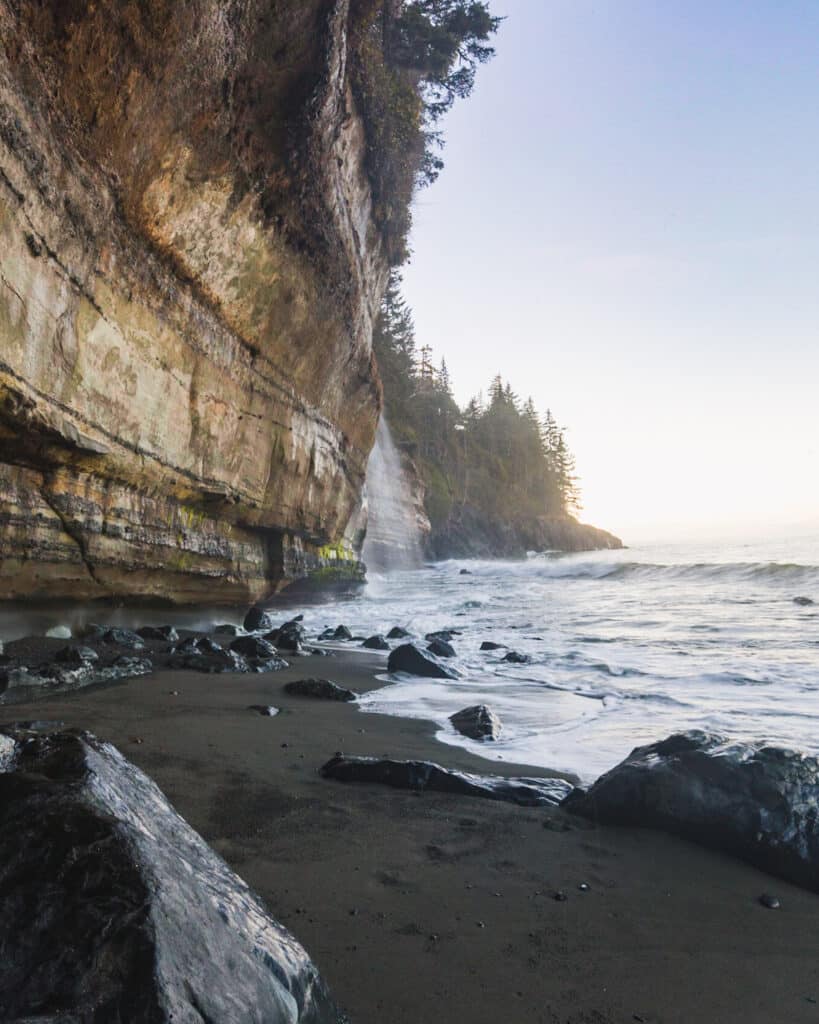
When in the outdoors it’s important to avoid harmful practices such as disturbing plants or rock-stacking, or removing any natural object from flowers to rocks, as it’s important to leave the environment as natural as possible for the animals and for fellow hikers to enjoy in perpetuity. As many flowers as there are, there are few enough that if we all took one, then there wouldn’t be any left. Take only photos, leave only footprints.
I also highly recommend reading up on Leave No Trace principles before heading anywhere into the outdoors in general. Following these important principles basically means doing your best to leave beautiful places like these as good (if not better) than you found them, both for their preservation and for the enjoyment of other visitors.
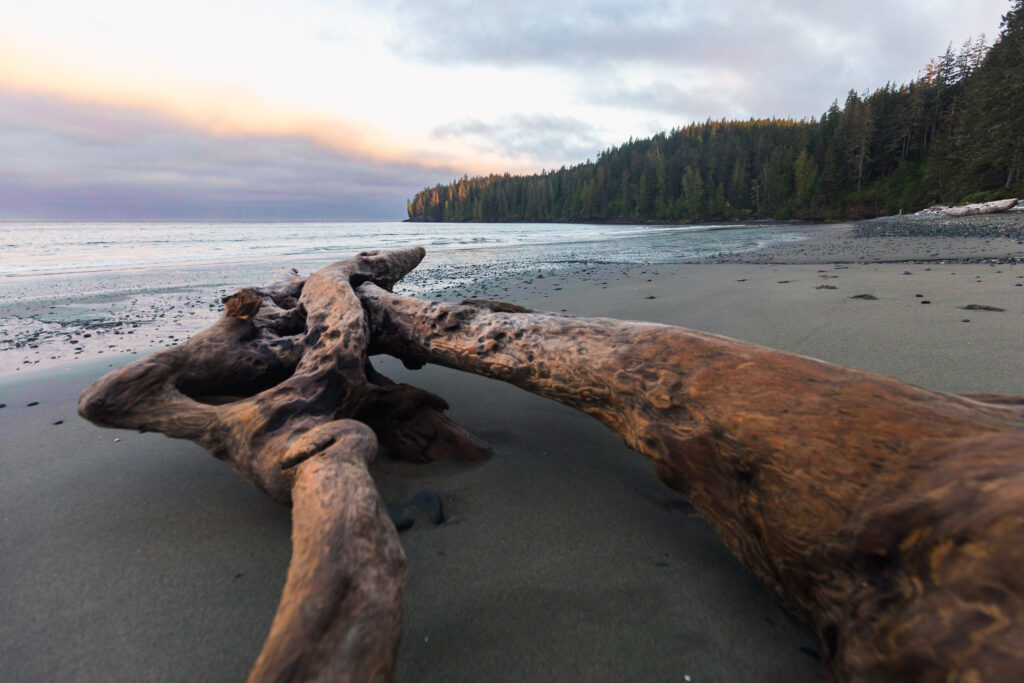
Go on a Sailing Adventure
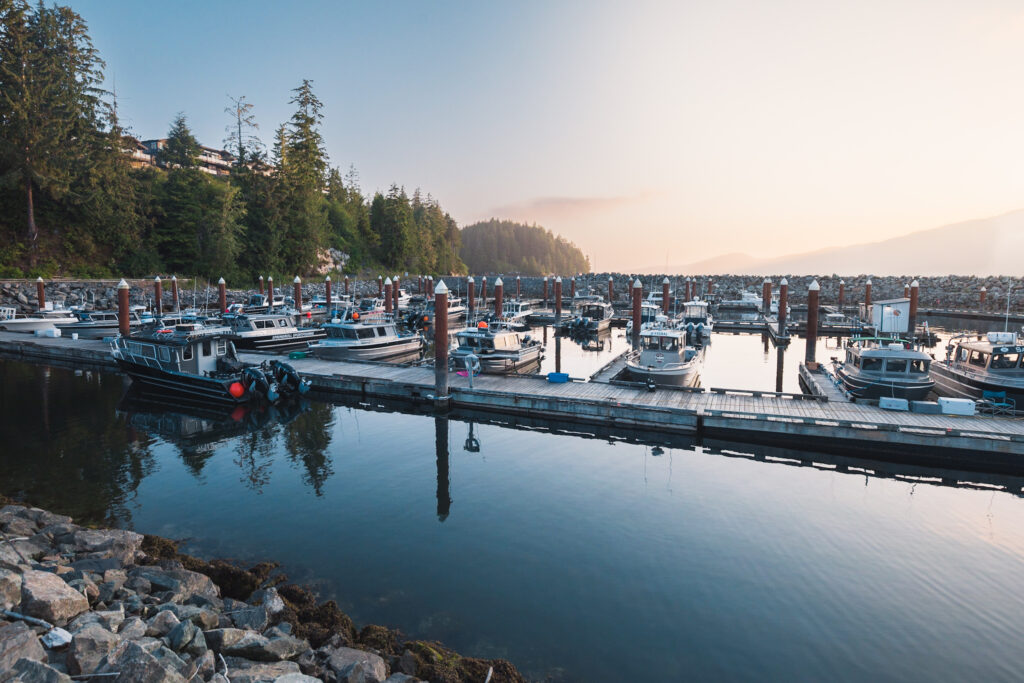
Highway views of the scenic Strait of Juan de Fuca and the distant Olympic Mountains are spectacular, but the best way to soak in those ocean views is by boat. This four hour sailing expedition starts from Sooke and offers the opportunity to see humpback whales, orcas, sea lions, and dolphins, and is an excellent chance to try sailing if you’ve never had the chance. Basic sailing skills are provided during this half-day adventure and it’s even possible to take the captain’s wheel!
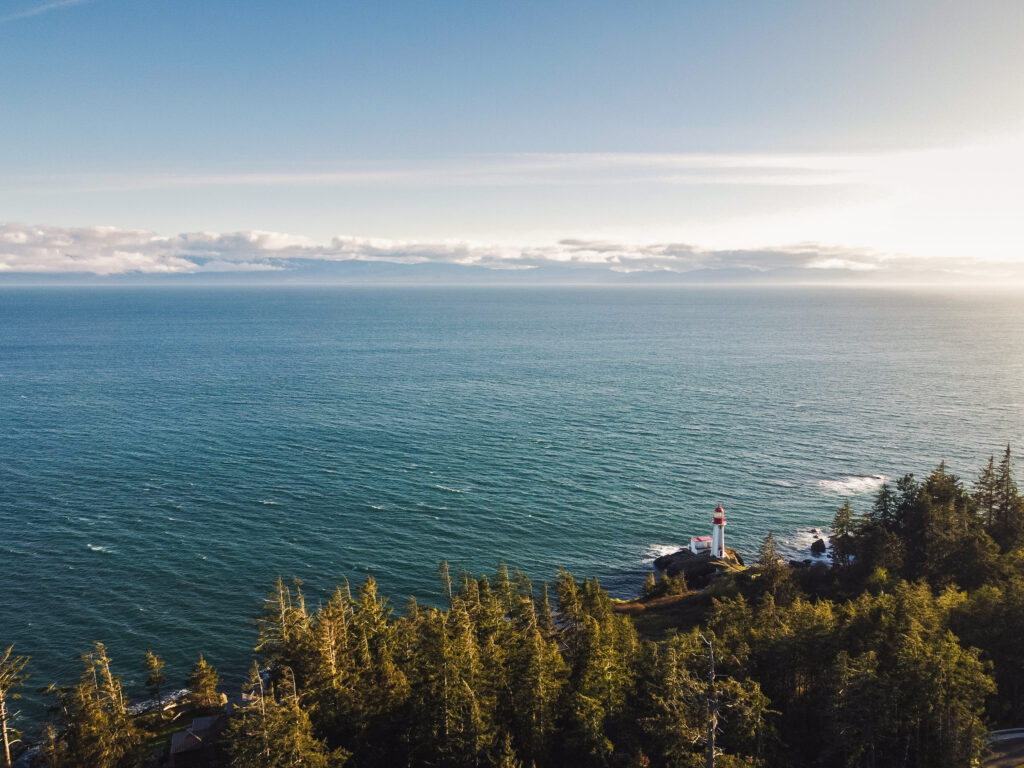
Hike the Sooke Hills
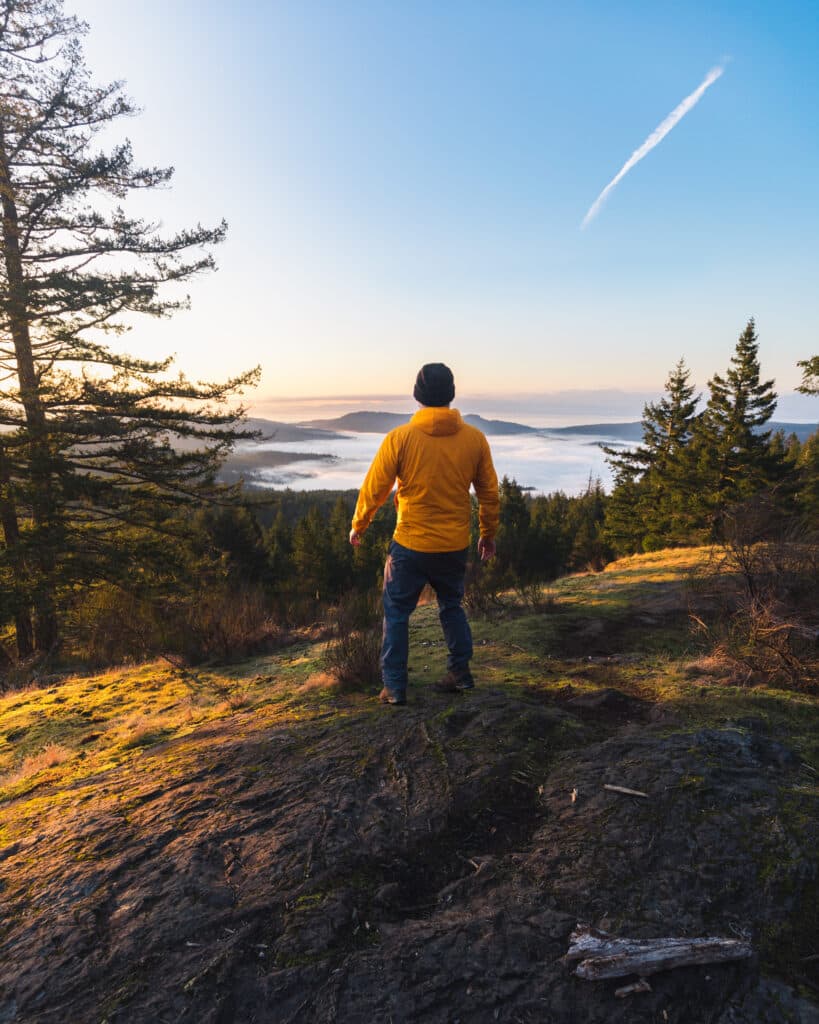
Only a short distance to the west of BC’s capital city is a hiking Mecca known as the Sooke Hills. This region is home to dozens upon dozens of small peaks with countless trails crisscrossing back and forth, offering a million different hiking opportunities. While even the highest peak in the Sooke Hills is no match for some of the mountains in central Vancouver Island, the fantastic views and relatively easy accessibility of hikes in the Sooke Hills makes this a prime destination for hikes in southern Vancouver Island. Many of the trails are short, making it very easy to add a hike in the Sooke Hills into your itinerary.
How to Hike Mt Brulé in the Sooke Hills
How to Hike Broom Hill in Sooke
Sooke Breweries + Sherringham Distillery
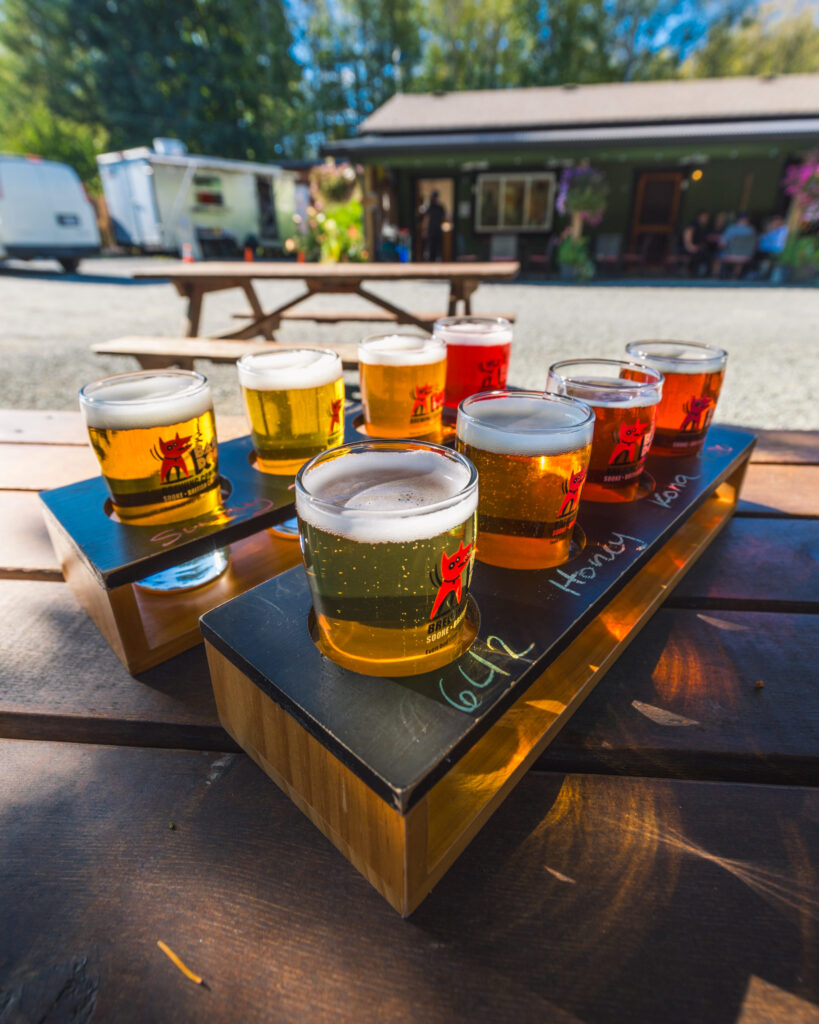
t’s hardly surprising that local brewers and distillers take so much inspiration from Sooke’s beautiful coastal surroundings. The small seaside community is home to three great breweries, all of which are worth visiting not only for the great beer but also for the relaxed and unpretentious atmosphere. Sooke Oceanside Brewing lives up to its name with a large outdoor patio offering fantastic ocean views out over the Sooke Inlet, while Sooke Brewing Company’s location take inspiration from the region’s logging past in its design. Finally, Bad Dog Brewing is the furthest away from town on a sleepy property where everything has a small-batch homemade feel.
The award-winning Sherringham Distillery recently moved from its Sooke location to a new distillery closer to Victoria in Langford, but it’s still definitely worth a stop on the drive from Victoria towards Port Renfrew. Their flagship Seaside Gin uses local winged kelp to give it a west-coast flavour, and was awarded World’s Best Contemporary Gin at the World Gin Awards in 2019.
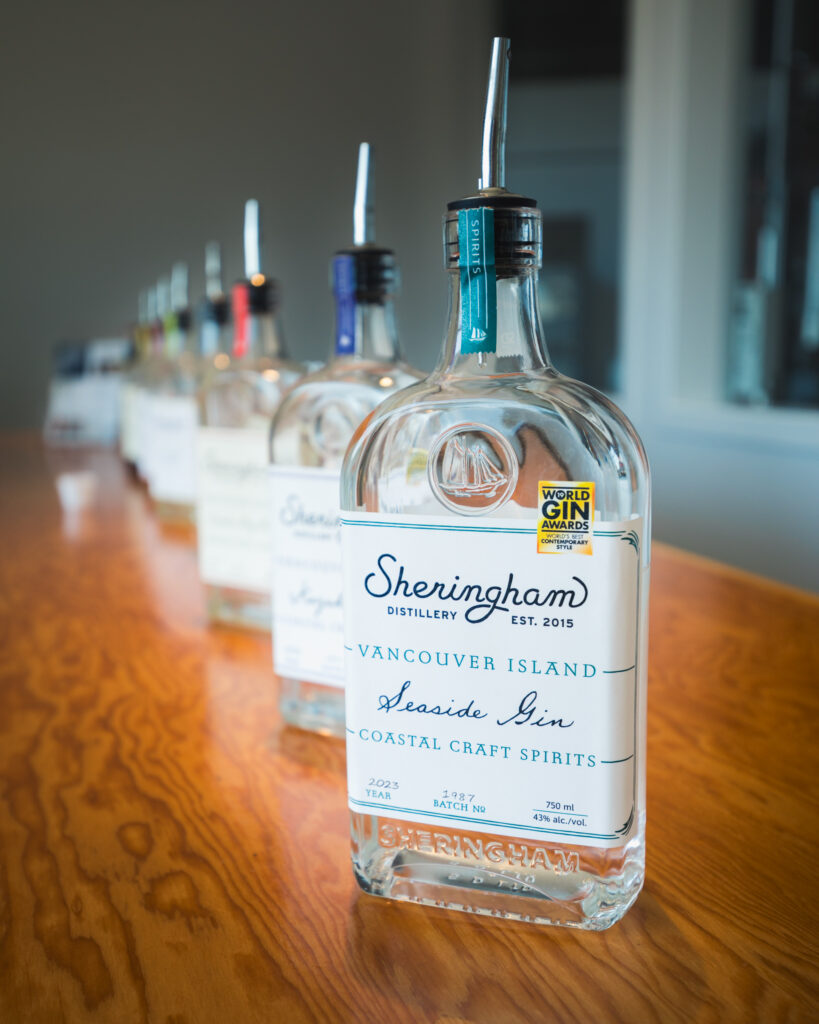
Muir Creek Old Growth
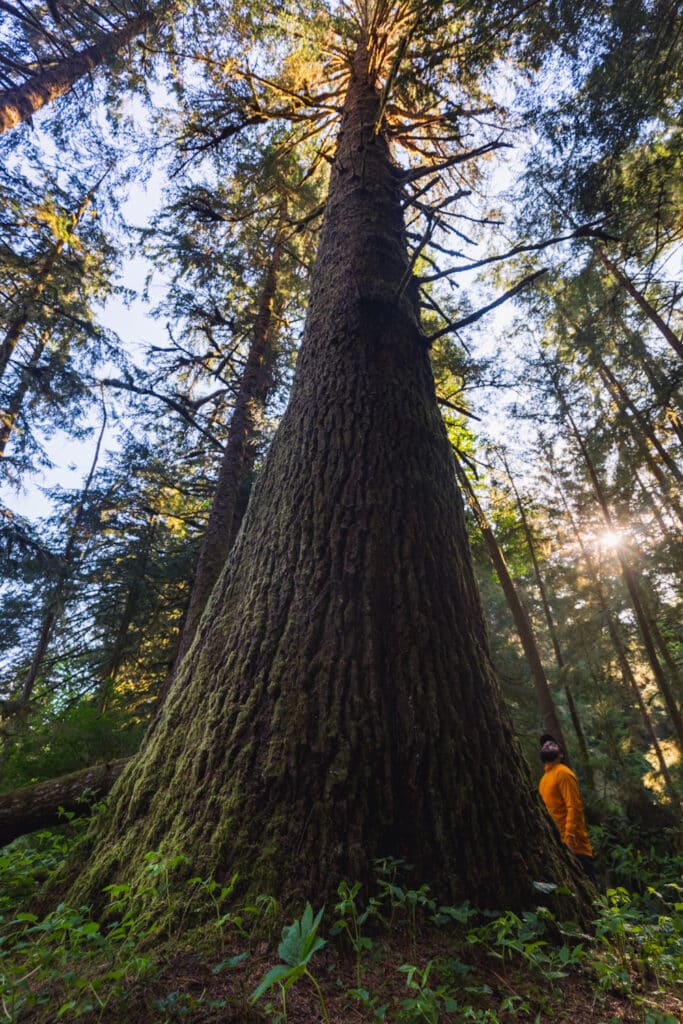
While Port Renfrew might be “The Tall Tree Capital of Canada”, there are a number of other gorgeous groves of old growth trees remaining around Vancouver Island. Alongside Muir Creek, near the small town of Shirley, there’s a fantastic trail that leads past some beautiful giants. If you’re planning on spending lots of time visiting the tall trees in Port Renfrew then it’s probably not worth stopping at the not-quite-as-impressive Muir Creek. If you’ve got time to kill on your way back however, the old growth near Muir Creek is one of my favourites.
Sherringham Lighthouse
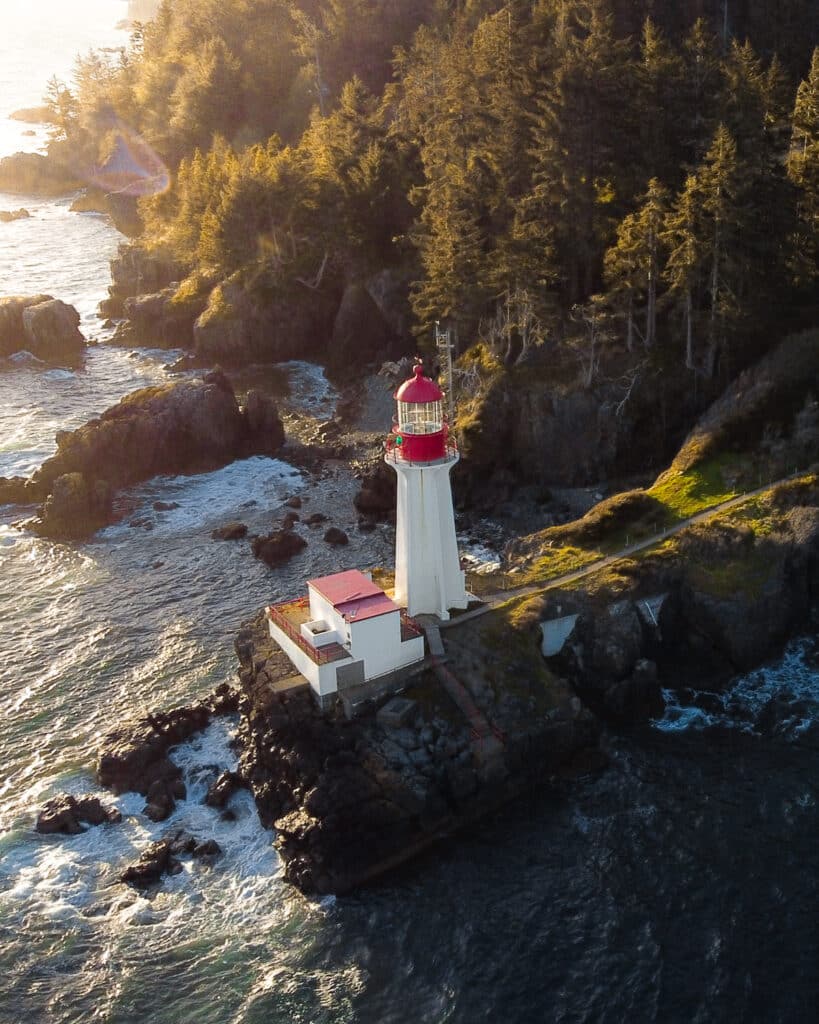
Originally built in 1912, the Sheringham Point Lighthouse is a designated National Heritage Lighthouse, and one of several picture-perfect lighthouses worth visiting on Vancouver island’s rocky coasts. A short and easy trail from the parking lot leads to this protected site which is one of my favourite stops along the way between Victoria and Port Renfrew.
Shirley Delicious
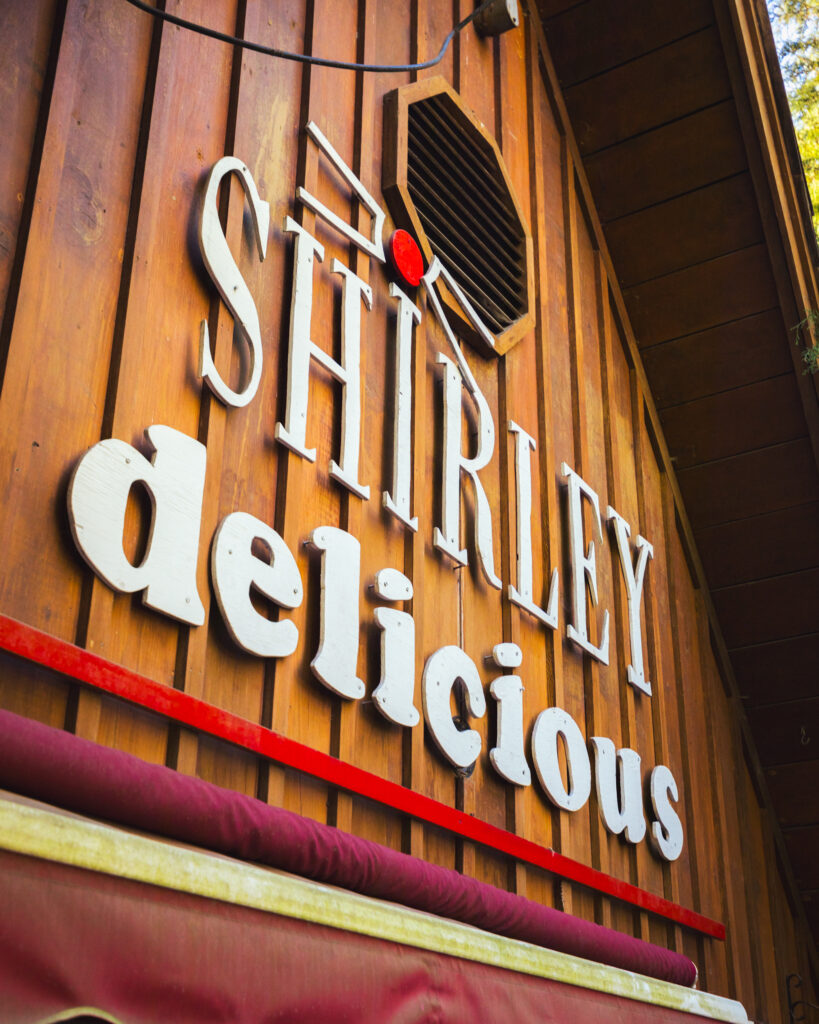
The rustic and cozy Shirley Delicious, located just off of the highway in the community of Shirley, specializes in serving fresh baked goods, brunch, lunch, coffee and treats. They do it so well that they consistently rank high on Yelp’s annual “Top Places to Eat in Canada” list, and have received praise from The Huffington Post, The Guardian, and The New York Times. As the place has increased in popularity they’ve had to expand seating to accommodate more people, but Shirley Delicious maintains it’s friendly and unpretentious charm. To many travellers regularly driving down the Juan de Fuca towards Port Renfrew, a stop at Shirley Delicious for a breakfast sandwich and coffee is an essential part of the trip, so if it’s open as you drive past (check the hours, it closes early!) I highly recommend trying it for yourself.
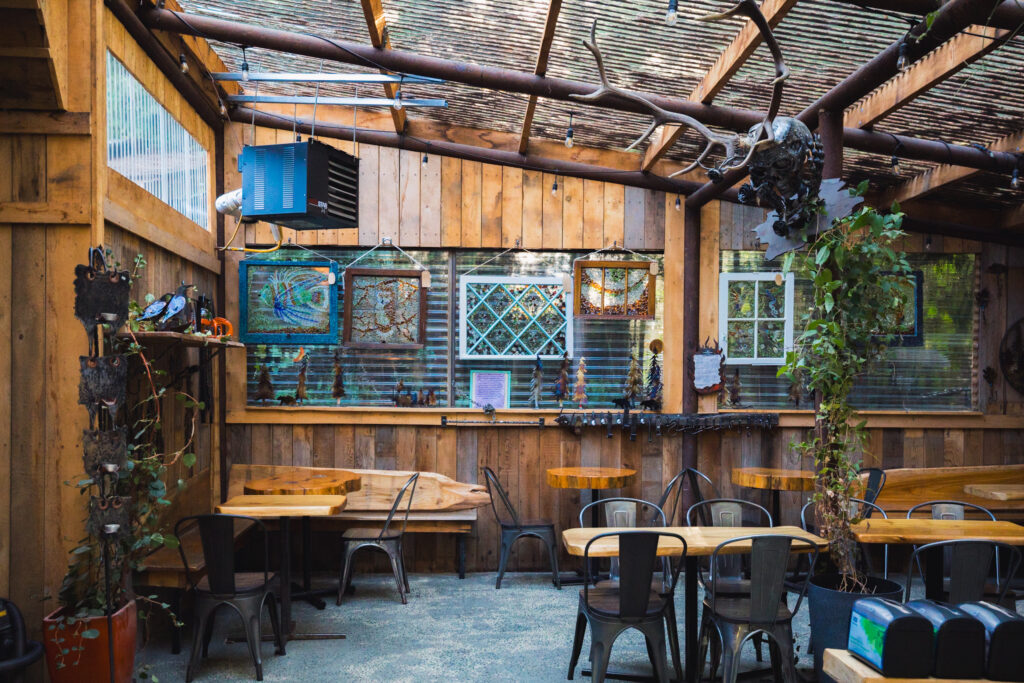
Stoked Pizzeria and Market
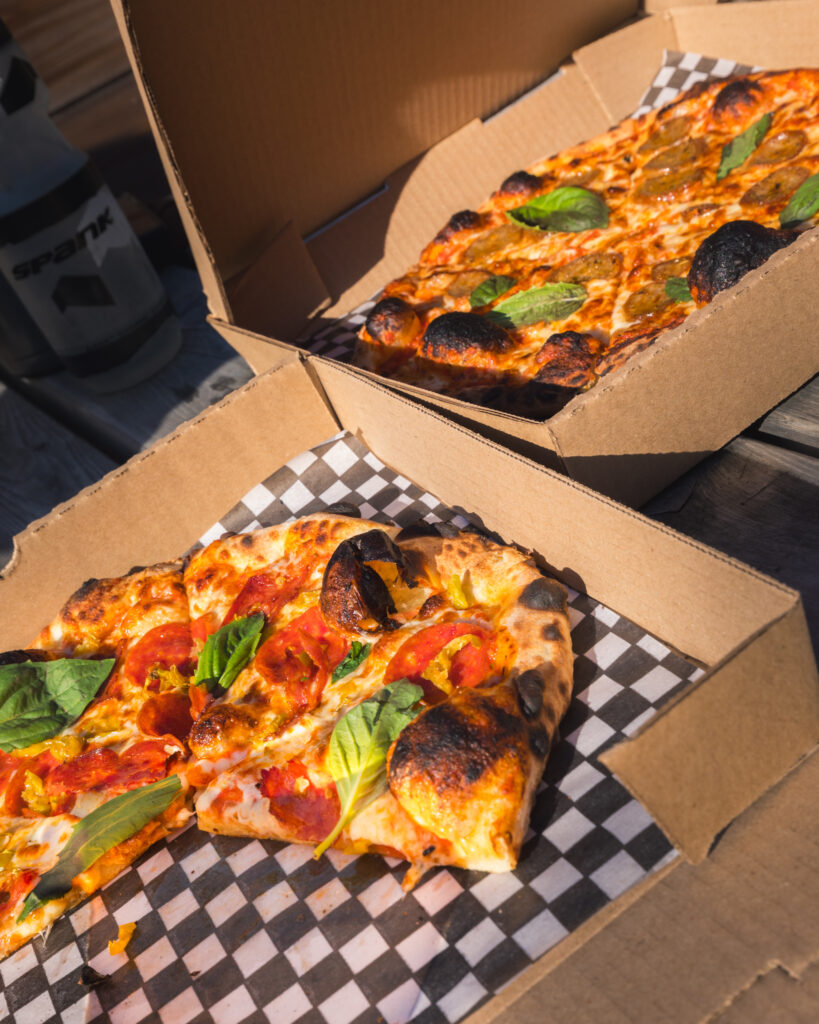
Stoked Pizzeria and Market is all about thinking local. They partner with local food producers and farms to source ingredients for their delicious food, as well as with local artists whose works are featured in the shop. It’s a great please to peruse locally made goods while waiting for your pizza to come out of the wood fired oven. There’s a large outdoor patio seating area, but if you’re after even more of a view, I highly recommend driving another two minutes to be able to enjoy your pizza at the first beach on the list, French Beach.

French Beach
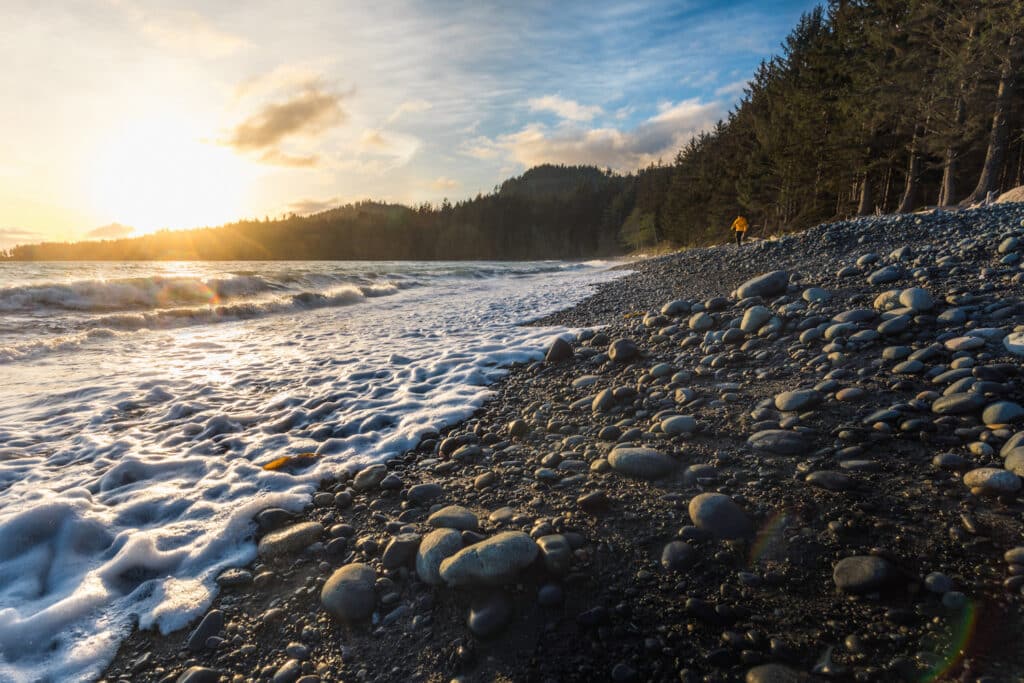
French Beach is one of my favourite beaches between Victoria and Port Renfrew. I love the views of the distant hills, and I especially love how accessible it is. French Beach is the only beach on this list that doesn’t require a hike to get to, and the small park is equipped with washroom facilities and benches perfect for having a picnic. It takes two minutes to get out of your car and enjoy this beautiful Vancouver Island beach, so I highly recommend stopping here if you’re driving through.
Sandcut Beach

Sandcut Beach is another relatively easy beach to access on the way to Port Renfrew, with the downhill walk from the parking lot only taking about five or ten minutes to reach this beautiful pebble beach. While Sandcut Beach does make the perfect place to find a piece of driftwood to sit on and enjoy the amazing views of the distant Olympic Mountains, most visitors to choose to walk up the beach for an additional 10 or 15 minutes to reach beautiful Sandcut Falls.
Cold Shoulder Cafe
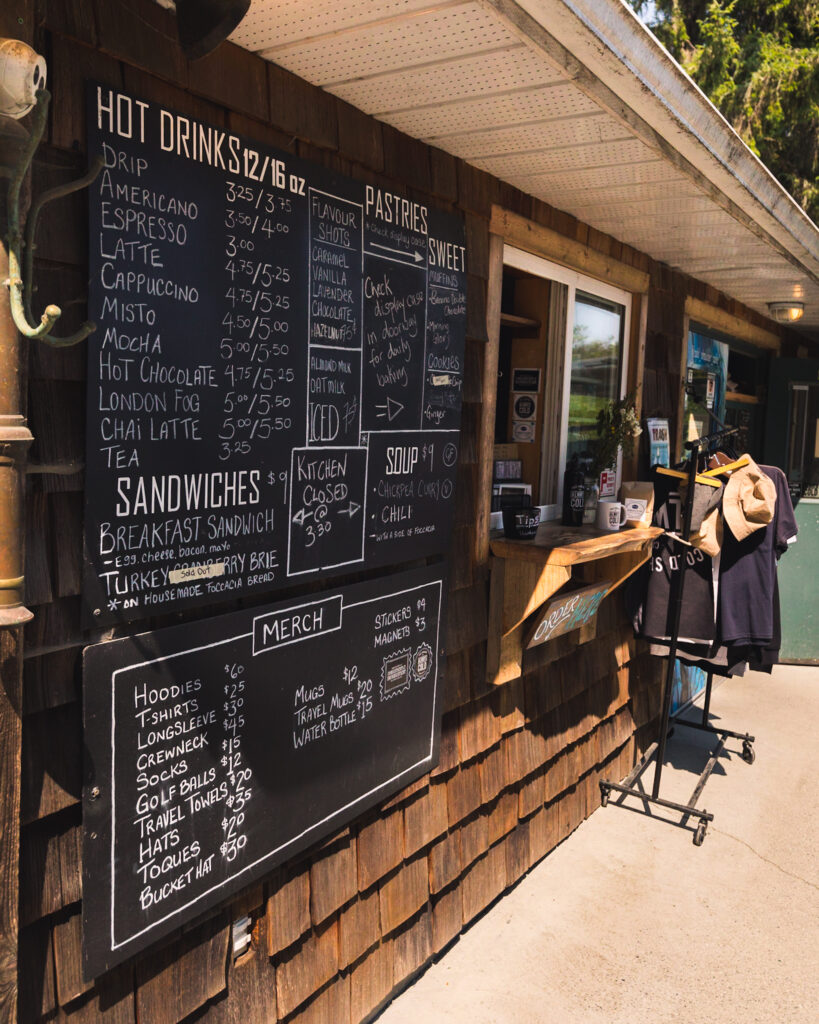
Cold Shoulder Cafe in Jordan River is the last sign of civilization before the highway rises up high above the coastline and Juan de Fuca Provincial Park below. Enjoy fresh baked goods and drinks from this cozy little cafe near the ocean.
China Beach
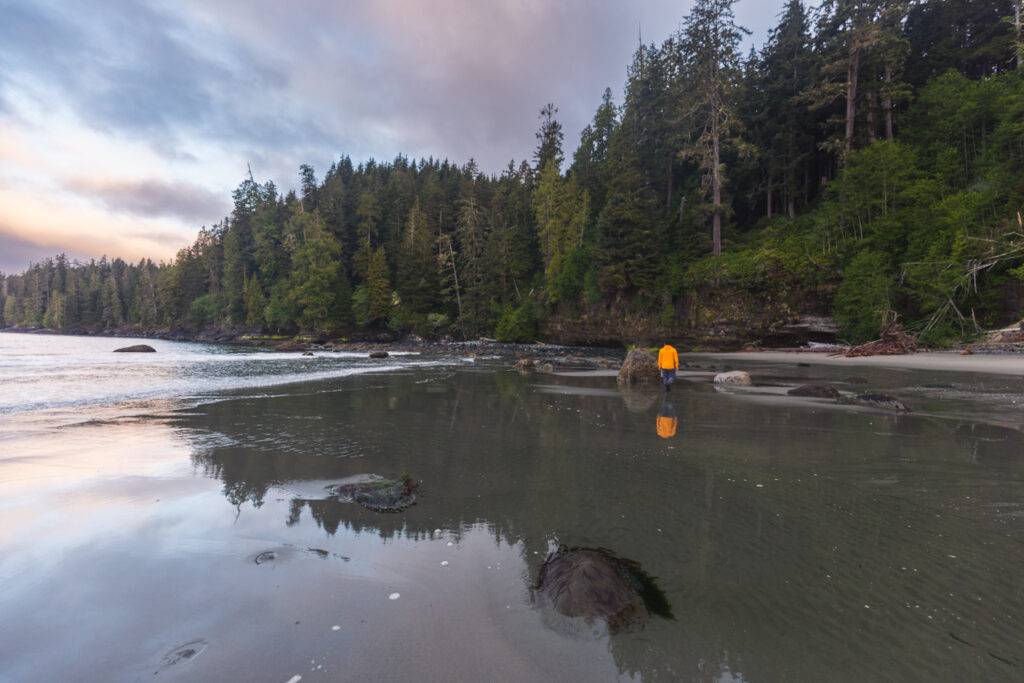
China Beach and Mystic Beach are two beautiful Juan de Fuca Provincial Park beaches that both take upwards of half an hour to walk down to from the same trailhead. China beach is the quieter of the two, though with its beautiful sand and lush vegetation is by no means less beautiful. The trail down to China Beach is wide and well-maintained, making it an easier walk than some of the others in the area. I highly suggest walking north along China beach to where a waterfall drops down from the high forested cliffs. Most people don’t know about this waterfall, so you’re bound to have it all to yourself.
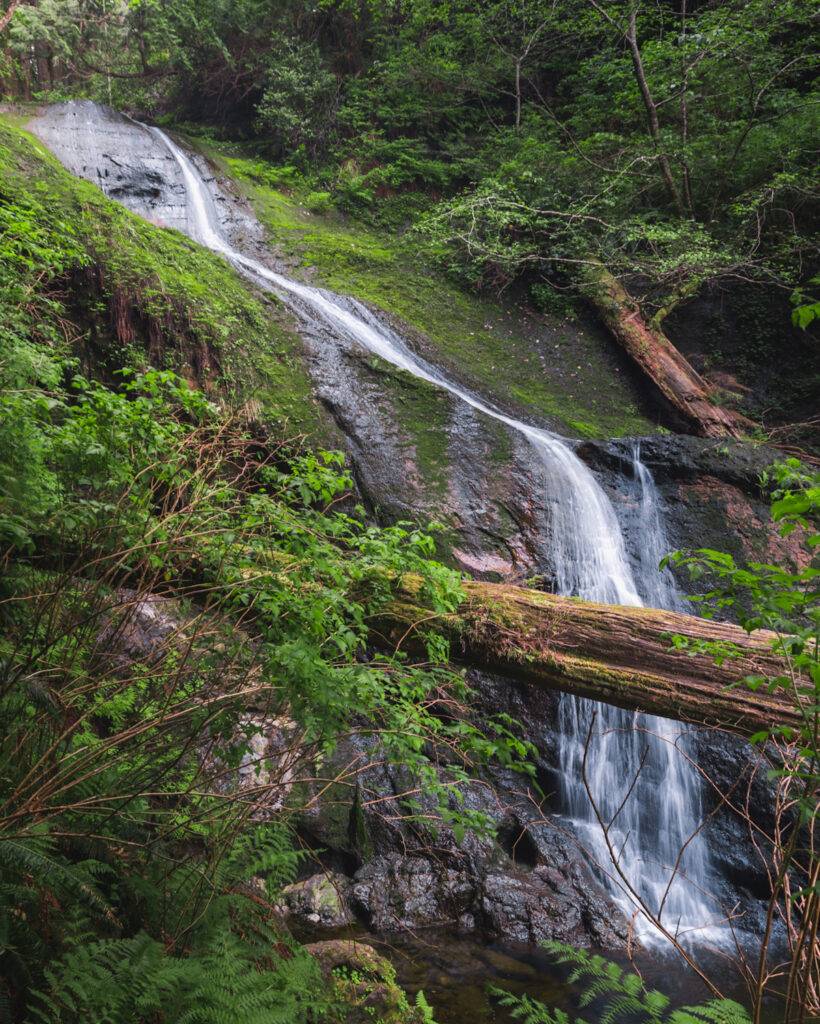
Mystic Beach
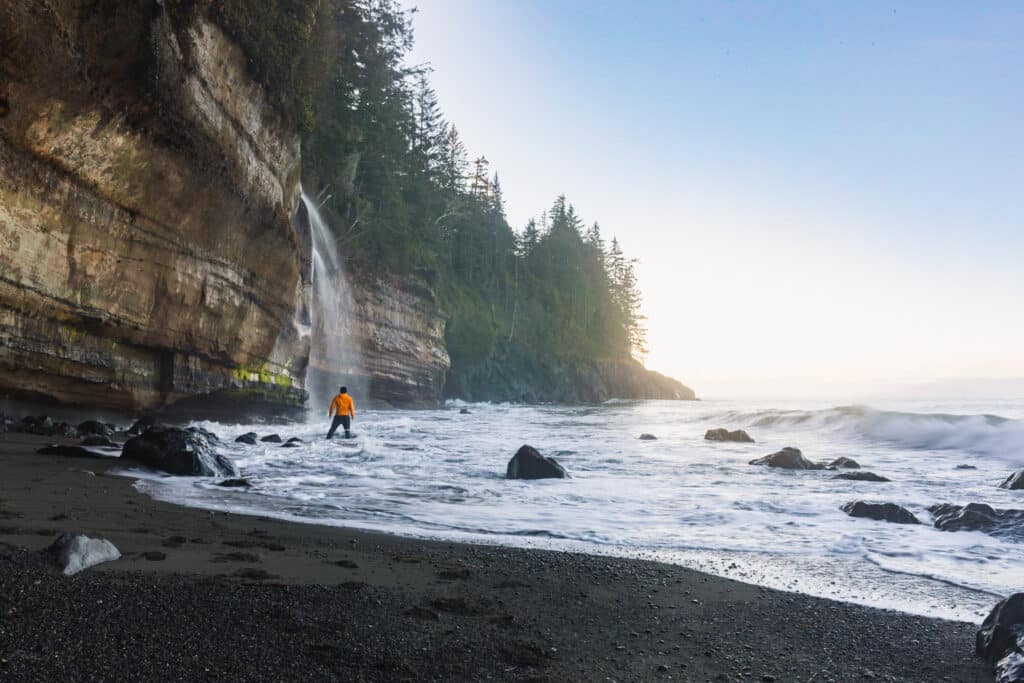
Mystic Beach is one of the most iconic (and popular) beaches on Vancouver Island, and it’s not hard to see why. This gorgeous beach is home to a spectacular waterfall that leaps down from the dramatic cliffs into the ocean, and is probably one of the most photographed waterfalls on Vancouver Island. It’s worth exploring down towards the other end of the beach as well, where a sea cave is accessible at low tide. The hike down to Mystic Beach is pretty typical for Vancouver Island’s wild and wet west coast; the entire trail is pretty much one long mud puddle. Make sure to bring appropriate footwear so you can walk through the mud instead of trampling the vegetation on either side. Mystic beach gets pretty popular in summer, but it’s large enough that it’s not too hard to find a spot for yourself.
Read the Full Blog Post: Mystic Beach Falls
Sombrio Beach
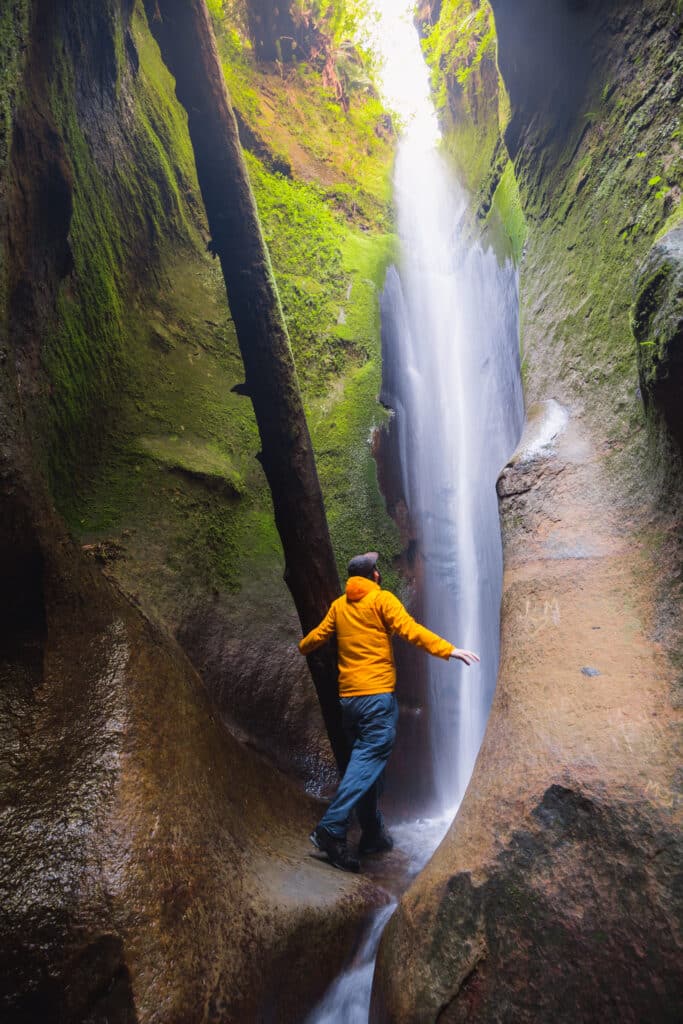
Sombrio Beach is among the longest and most beautiful beaches on Southern Vancouver Island, and is a popular camping destination among day-trippers and multi-day backpackers trekking the coastline. The area of the beach accessed by the relatively short trail is usually busy with tents set up every dozen meters, but walk far enough down this popular beach and you’re guaranteed to find a spot to yourself. There a couple of different waterfalls accessible from Sombrio Beach, but the most famous is the Hidden Falls located up a gushing stream that comes out of a verdant mossy canyon. it’s an incredibly beautiful and sacred spot that has sadly been vandalized by people carving their names into the rock, but despite the destruction it’s still one of my favourite places to visit on Vancouver Island.
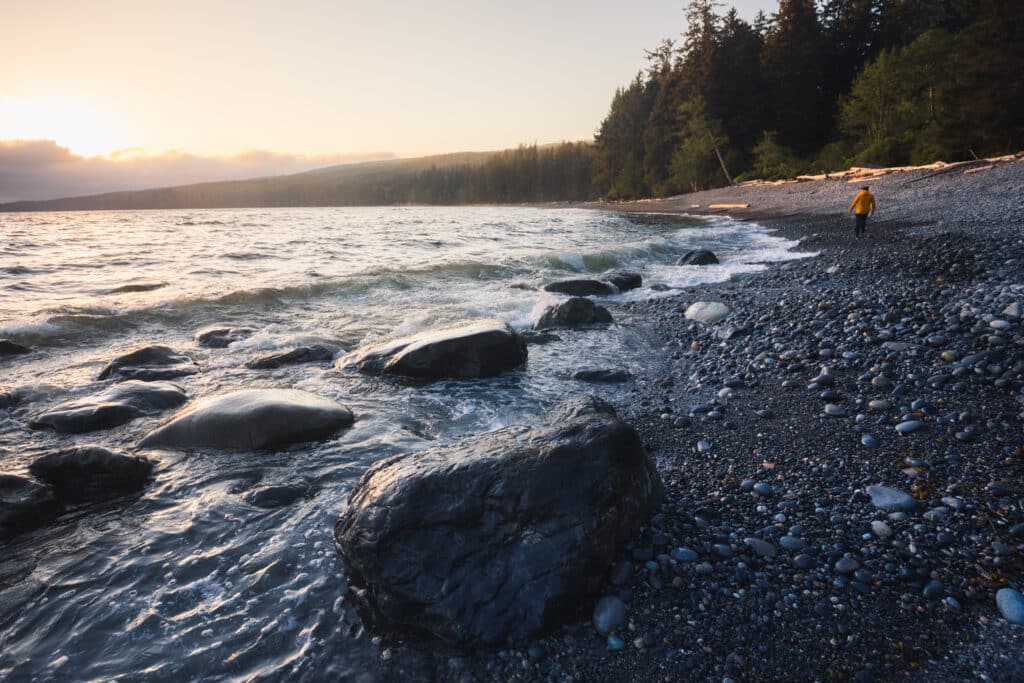
Parkinson Beach
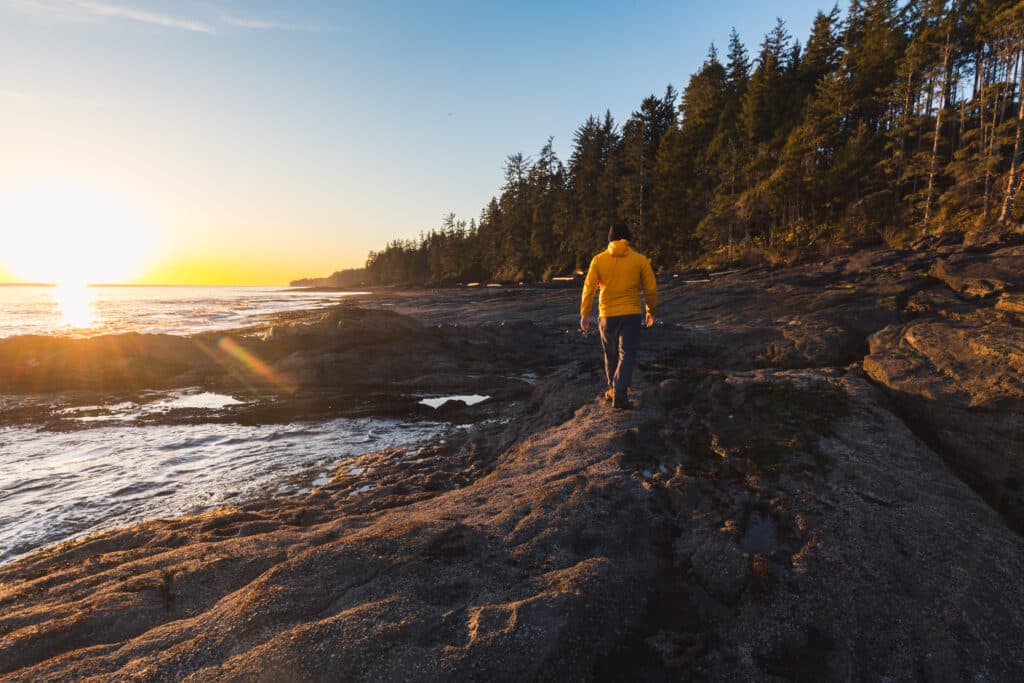
Unlike many of the other coastal paradises found along Juan de Fuca Provincial Park, the shoreline accessible from the Parkinson Creek Trailhead is one that you’re sure to have all to yourself. This quiet section of the park isn’t really a beach, but consists of a long flat rocky shoreline full of tide pools to explore. The coastline here is some of the most dramatic in the park, and truly feels like the edge of the world.
Recommended Hiking Gear



Water is a must whenever I’m hiking, especially if the sun is going to be out. My favourite water filter I’ve used is the Katadyn BeFree 0.6L, which unlike other water filters I’ve used packs up really small and lightweight. For hikes where I know there won’t be any readily available water sources along the way, I make sure to bring my own. The Hydrapak Stow 1L bottle is my go-to, for the same reason that it’s made of a soft plastic that folds up and doesn’t take up any more extra space than necessary in my pack. Finally, Aquatabs are another great option for purifying water, with one tablet being suitable for one litre of water. I previously used the Grayl water filter while travelling internationally, and though I found its hard body more convenient for day to day use and easier to drink from, it has a little too much bulk for my fast-and-light style of hiking.



The secret to all my photos of gorgeous sunset and sunrise mountaintop views? A lot of hiking in the dark. And let me speak from personal experience when I say that the last thing that you want to happen when hiking is to be caught in the dark without a headlamp. I used the Black Diamond Spot 400 for years and it worked great – until I lost it on top of a mountain somewhere. The only downside to it was having to worry about the batteries dying, though there’s also a slightly more expensive version that has a rechargeable battery. Nowadays I’m using the Petzl Actik Core, which is a bit pricier than the more budget-friendly Black Diamond, but is also brighter, more comfortable (in my opinion), and has a hybrid power system that is rechargeable but can also take AAA batteries if needed.
You won’t see me using trekking poles on shorter hikes often – but on long hikes and backpacking trips, as well as certain scrambles, they are an absolute lifesaver. I’ve invested in a high quality ultra-lightweight pair of MSR DynaLock Ascent carbon poles which, while pricey, I don’t regret one bit. If you’re not entirely sure how much use you’re going to get out of a pair of trekking poles, the best budget-friendly option would be the Trekology Trek Z 2.0. Amazon does sell a lot of cheaper Made in China-style trekking poles for cheaper, but these usually are much much heavier and not worth buying.
All the best and most long-lasting cables and power banks I’ve ever owned have been Anker. I once had a phone cable from them that lasted me over three years of daily use! That’s why I keep an Anker PowerCore Essential 20K power bank on me. Like many people I use my phone for a lot of stuff when hiking (checking in with family, using online maps, taking photos, flying my drone) so I like to be prepared for that low battery warning by having a backup power source on me just in case.



The only socks I ever buy for myself are from Darn Tough, and I almost always make sure to wear them when hiking. After years of having no problems only wearing these comfortable and rugged socks for hikes, I accidentally wore a pair of no-name socks on a hike last year and ended up with blisters on both feet. Safe to say I’m back to sticking with the Darn Tough. And the best part? They have a lifetime guarantee, meaning that if they ever wear out you can send them back for a brand new pair. For hiking footwear I go between a pair of lightweight approach shoes for quick and dirty mountain ascents or anything involving scrambling and more heavy-duty boots for longer treks. I’ve worn a couple different versions of the lightweight but super durable Arc’teryx Konseal FL 2 approach shoes for a few years now and am very impressed with the durability. I also really like the thick toecap that keeps me protected every time I stumble into a root or large rock. For longer, tougher, or muddier treks I rely on my LOWA Camino EVO GTX, which I find insanely comfortable and made of very high quality.



I wear my Ar’teryx Gamma Lightweight Pants on every single hike I go on, and on many days when I’m not hiking. After several years of abuse they are still holding together extraordinarily well, with only a few small holes from where I’ve fallen down and some slight stains from being repeatedly coated with mud. They’re lightweight, breathable, and super comfortable. For lightweight and breathable hiking tops I’m a big fan of both the Patagonia Capilene Shirt and the MEC Core Shirt. My Arc’teryx Squamish Hoody shows up in a lot of my photos. It’s super lightweight and packable, and does a great job of cutting the wind while also being pretty breathable. I also have an Arc’teryx Atom Hoody and Arc’teryx Beta LT that I pull out for cooler or wetter conditions.
